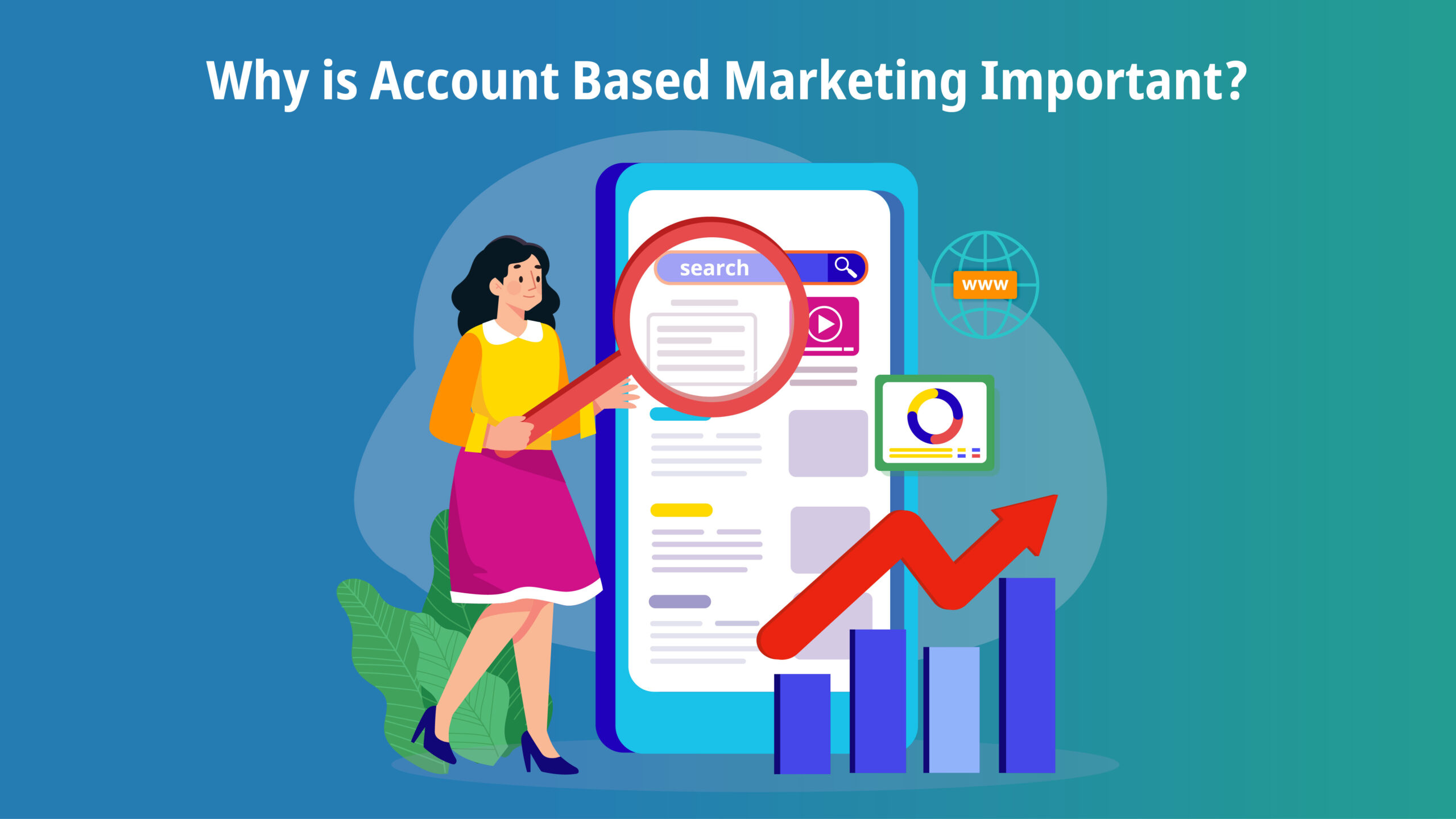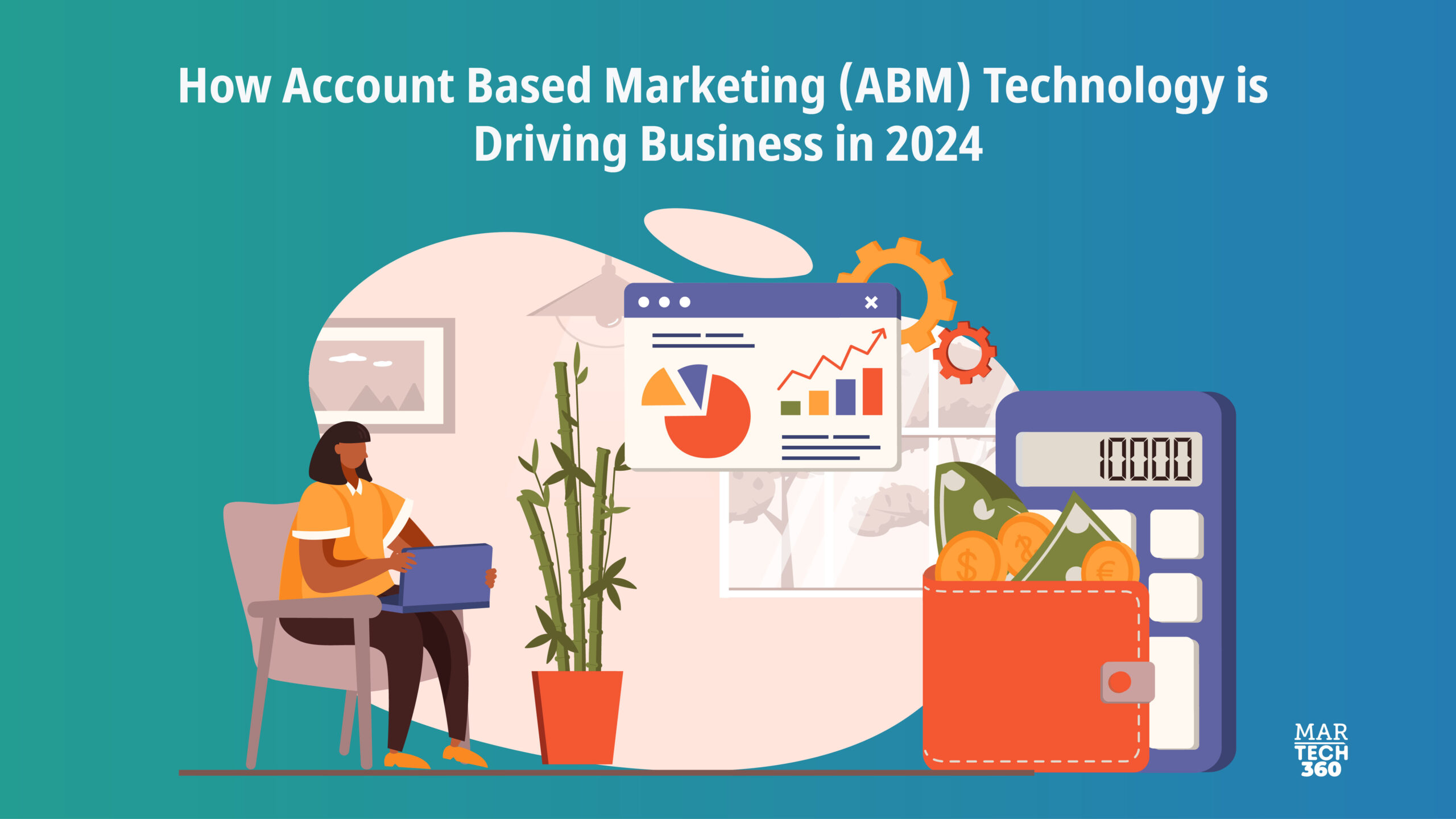Picture the realm of account based marketing, where you kickstart the sales process by directly targeting your ideal, most valuable accounts. No more wasting time on marketing to unqualified leads that don’t align with your business. This approach allows you to swiftly transition to engaging and satisfying your target accounts, enhancing efficiency. Account-based marketing streamlines your focus, ensuring Marketing and Sales work in perfect harmony, accelerating your team’s ability to engage and delight target accounts.
Let’s take a closer look at the world of ABM along with its importance in this digital age.
What is Account Based Marketing?
Account-based marketing is a focused approach to B2B marketing in which the marketing and sales teams of a business collaborate to target and convert best-fit accounts into customers. Marketers are constantly competing for the attention of potential customers in this age of information abundance. As a result, businesses that want to maximize their ROI should concentrate their efforts on high-value accounts, taking account penetration, marketing penetration, and logos into account.
Account-based marketing is not a new concept, but it has recently seen a resurgence as a result of evolving technology and a shifting landscape. The right account based marketing agency can help improve marketing ROI, drive attributed revenue, generate more conversions and qualified leads, and align sales and marketing.
According to a significant number of B2B marketers, ABM campaigns are highly cost-effective. In fact, a considerable 76% of marketers believe that ABM yields a higher return on investment (ROI) compared to other marketing strategies.
How Does Account Based Marketing Work?
With today’s new and improving technology, scaling ABM to a variety of organizations is now easier and more affordable, and marketers across the board are implementing this strategy within their teams to drive higher-value outcomes.
Rather than interrupting your target audience and customers, inbound marketing allows you to provide your audience with the information they want when they want it in a more organic way. By allowing for highly targeted and efficient resource allocation of high-value accounts, inbound lays the groundwork for a strong ABM strategy.
Inbound marketing attracts target accounts, and strategic targeting accelerates the flywheel so you can win and delight those accounts with an exceptional customer experience. Inbound marketing lays the groundwork for a strong strategy; the method expands on inbound by enabling targeted and efficient resource allocation of high-value accounts.
With this combined approach, you can reach a larger number of prospects than if you only used one method. You can create and use content that serves both an ABM and an inbound strategy, giving your content a two-for-one value. Account-based marketing software is available to make it simple to implement this strategy and inbound strategies in tandem.
Why is Account Based Marketing Important?
ABM holds significant importance for various reasons. Here are some key considerations highlighting its significance:
- Targeted Approach: The strategy concentrates efforts on high-value accounts poised for substantial growth. This allows tailored messaging to address each account’s unique needs.
- Personalization: This method prioritizes personalized marketing. Understanding account attributes enables tailored content and experiences, fostering stronger relationships and increasing conversion chances.
- Alignment with Sales: The technology aligns marketing and sales teams closely. By identifying key accounts and working together to understand their needs, teams collaborate to drive revenue growth.
- Higher ROI: It offers a clearer return on investment (ROI) compared to other approaches. Focusing resources on high-value accounts allows for precise measurement of impact, leading to higher conversion rates, customer retention, and improved ROI.
- Upselling and Cross-selling Opportunities: ABM encompasses marketing to existing customer accounts. Nurturing these relationships can encourage upselling and cross-selling, maximizing value from these vital accounts.
Benefits of Account Based Marketing
Before implementing any new marketing strategy, consider whether it is appropriate for your company. Account-based marketing is no exception. Here are some of the key benefits of ABM.
- Keep Marketing and Sales on the same page.
- Increase your company’s relevance among high-value accounts.
- Ensure that customers have consistent experiences.
- Calculate the return on your investment.
- Simplify the sales cycle.
- Account relationships can help you grow your business.
PwC reports that 48% of consumers emphasize the importance of consistent, dependable experiences for loyalty. In an era where all buyers, including B2B prospects, seek uniformity, it’s crucial for businesses to adopt diverse marketing models.
Account Based Marketing Tools
When advancing target accounts through the sales process, selecting the right tools is crucial for streamlining ABM efforts.
When seeking account based marketing software, prioritize platforms that facilitate smooth selling. Look for:
- Identification: Efficiently locate potential customers and accounts using templates and AI-powered features.
- Collaboration Enablement: Shared tools to facilitate ongoing conversations between teams and potential customers.
- Analytics: Access to pertinent data for assessing the effectiveness of your approach.
Integrations for the technology are equally vital. For instance, RollWorks, an ABM automation tool, seamlessly integrates with your CRM. (If you use HubSpot, explore the RollWorks and HubSpot integration.)
ABM automation empowers your business to engage key customers with a tailored approach, smoothly guiding them through the sales process. Additionally, providing account-based marketing training for your team can offer a competitive advantage.
Account Based Marketing Strategy
Having grasped the fundamentals of account-based marketing, let’s take a look at the five steps you can adhere to in order to craft an effective ABM campaign.
Step 1: Identify Target Accounts
Account-based marketing flips the traditional approach by first identifying desired companies and then engaging them with tailored campaigns. Prioritize high-value potential targets, ranging from hundreds to multi-million-dollar deals. Identify prospects by similarity to past accounts, size, revenue, location, social media engagement, competitor associations, industry news, and networking.
Step 2: Assess and Order Prospects in Your Target Accounts
To effectively implement account based marketing, go beyond listing target accounts; find contact info for key individuals within those businesses. Utilize advanced lead-based targeting, leveraging existing CRM data and LinkedIn to identify decision-makers. Import relevant contacts into your CRM and collaborate with your team to prioritize prospects, ensuring a focused approach to key decision-makers.
Step 3: Sync Marketing and Sales Efforts
Marketing and sales collaboration is essential for effective lead nurturing. Align on target accounts, ideal customer profile, shared messaging, KPIs, technology use, and lead qualification actions. Assign responsibilities to individuals for accountability, fostering a thorough approach. Regular weekly meetings between sales and marketing teams are vital to maintain synchronization in account-based marketing efforts.
Step 4: Create Customized Content
Account based marketing targets specific prospects at designated organizations, facilitating the creation of highly personalized content tailored to their unique needs. This approach enhances engagement with B2B prospects who receive a plethora of marketing content. Personalization strategies include creating role or company-specific ads, reaching out on LinkedIn after promotions, employing dynamic content in websites and emails, daring to mention companies or individuals by name, crafting individualized emails, and connecting with prospects at industry events.
Step 5: Evaluate Your Results
ABM success relies on tracking key metrics like influenced pipeline, engagement rates, open rates, click-through rates, conversions, cross-sells, upsells, annual contract values, customer lifetime value, and win rates. Given the longer B2B sales cycle, it may take time to assess ABM effectiveness. Utilizing a data analytics tool helps you make timely adjustments and ensures your team focuses on relevant leads. The emphasis in ABM is on lead quality over quantity, aiming for larger deals and an increased average deal size to gauge strategy success.
Concluding Thoughts
The technology is a targeted strategy that focuses on engaging specific high-value accounts. To execute the technology effectively, businesses rely on specialized tools and software designed to streamline the process. This account based marketing software and tools provide essential features like precise account identification, a seamless collaboration between teams, and detailed analytics to gauge performance. With the right account based marketing tools in place, businesses can tailor their efforts towards key accounts, ensuring a personalized and effective approach that ultimately leads to higher conversion rates and increased revenue.


Comments are closed.